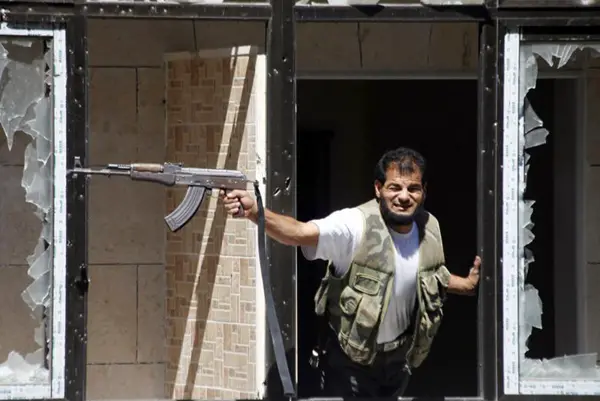Restoring full control over Aleppo, Syria's most populous city before the war, has been seen as critical to the fortunes of Syrian President Bashar al-Assad in a multi-sided civil war now in its sixth year.
Insurgents who had held the eastern part of the city since the early days of the war effectively agreed to surrender what remained of their besieged enclave and evacuate after a fierce government assault.
Famous for textiles, soap and its UNESCO-listed citadel, Aleppo was Syria's economic hub and of huge historic and cultural importance.
Below is a timeline of the key events in the battle for control of the city:
2011:Violence Breaks Out In Syria After Government Cracks Down On Pro-reform Protests
In March 2011, mass demonstrations break out in the Syrian capital Damascus demanding political reform, civil rights and the release of political prisoners, soon spreading to other cities. A few small protests take place in Aleppo.
2012: Rebels Take Parts Of Aleppo City
In early 2012 rebels take control of the rural areas northwest of Aleppo city, besieging the Minnegh military air base and the largely Shi'ite towns of Nubl and Zahra.
Protesters in Aleppo are shot at for the first time in July 2012 and rebels start to fight for the city itself. Poorer eastern districts quickly fall to the insurgents. Fighting in the Old City damages much of the historic covered market.
2013: Rebel Gains Cut Aleppo-damascus Highway
Rebels cut the main highway from Aleppo to the south, forcing government forces to use a longer, alternative route to reach it from the capital.
The western, government-held half of Aleppo comes under almost complete siege as rebels briefly also cut the alternative route. But in October government and allied forces retake it and strengthen their position.
In April 2013 the 1,000-year-old minaret of Aleppo's Umayyad Mosque collapses after being struck during fighting.
2014: Rebels and Government Consolidate Positions in Aleppo
The government's control of the skies starts to show as it increasingly uses jets and helicopters to strike rebels.
2015: Big Rebel Gains, Russia Intervenes
A series of rebel advances puts the government under pressure in northwest Syria, where Aleppo is located. But in October 2015 the first Russian air strikes take place and swiftly put the rebels on the back foot.
2016: The Siege and Bombardment of East Aleppo
February advances by the army and allies with Russian air support cut the most direct road from Turkey to rebel-held east Aleppo, recapturing Minnegh air base, ending the rebels' siege of Nubl and Zahra and putting pressure on insurgent supply routes.
On July 27 government forces fully encircle eastern Aleppo for the first time, but the siege is broken 10 days later by a rebel counterattack on the Ramousah district that briefly opens a perilous way into eastern Aleppo from the south.
Russian air power and Shi'ite militias from Iraq and Lebanon help the army recapture Ramousah on Sept 8, firmly re-encircling the rebel enclave. On Sept. 22, the heaviest air strikes in months hit east Aleppo and the government announces a new offensive to retake it.
After weeks of intense bombardment, in which many hospitals and other civilian infrastructure are hit, Russia and Syria's government declare a pause in their campaign on Oct. 18, urging rebels and civilians to quit east Aleppo.
A last rebel offensive aimed at breaking the siege begins on Oct. 28 from the countryside to the city's west, but after making some progress in the first two days, it loses momentum and all gains are reversed within a week.
Intense air strikes resume against east Aleppo on Nov. 15, putting all hospitals out of action by Nov. 19. On Nov. 28, pro-government forces take the northern part of the rebel sector in a sudden advance that reduces its size by more than a third.
Another swift advance on Dec. 5 and 6 brings the al-Shaar district and much of Aleppo's historic Old City under government sway, leaving the rebels trapped in a small southern portion of their former enclave.
On Dec. 12, the army makes a series of new advances after taking the Sheikh Saeed district after days of intense fighting and under a heavy aerial bombardment, leaving rebels stuck in only a tiny part of the city.
On Dec. 13 insurgents agree to withdraw in a ceasefire deal which would see them evacuate to rebel-held areas outside Aleppo with their families and any other civilians wanting to leave.
But the evacuation did not begin as expected on Dec. 14, with an opposition official blaming Iran and its Shi'ite militias allied to President Bashar al-Assad for the hold-up. Rebels said the ceasefire would continue despite the delay.
(REUTERS)
 简体中文
简体中文

